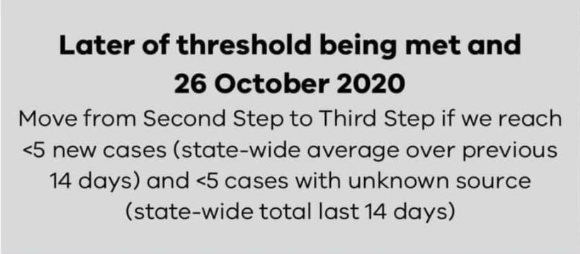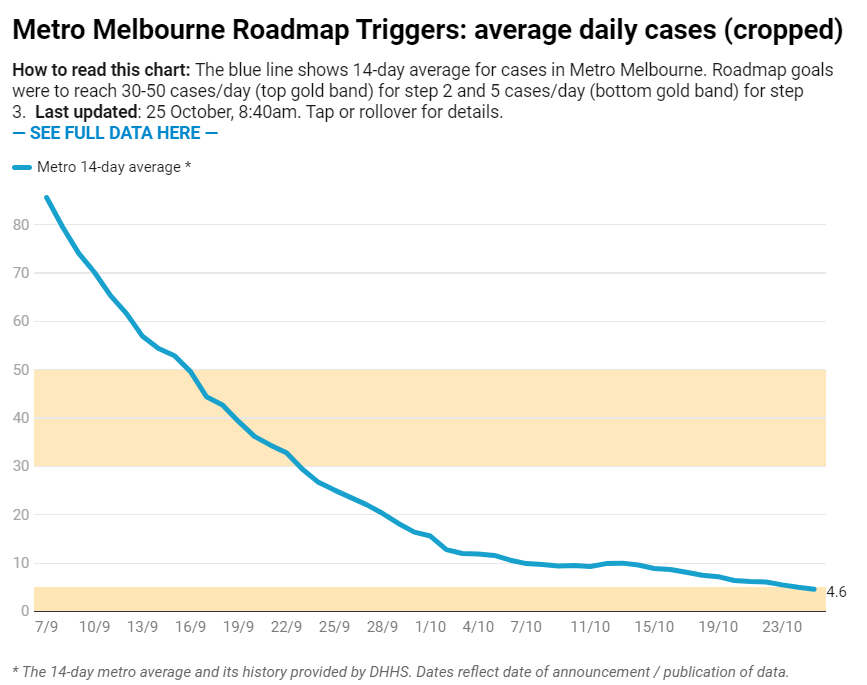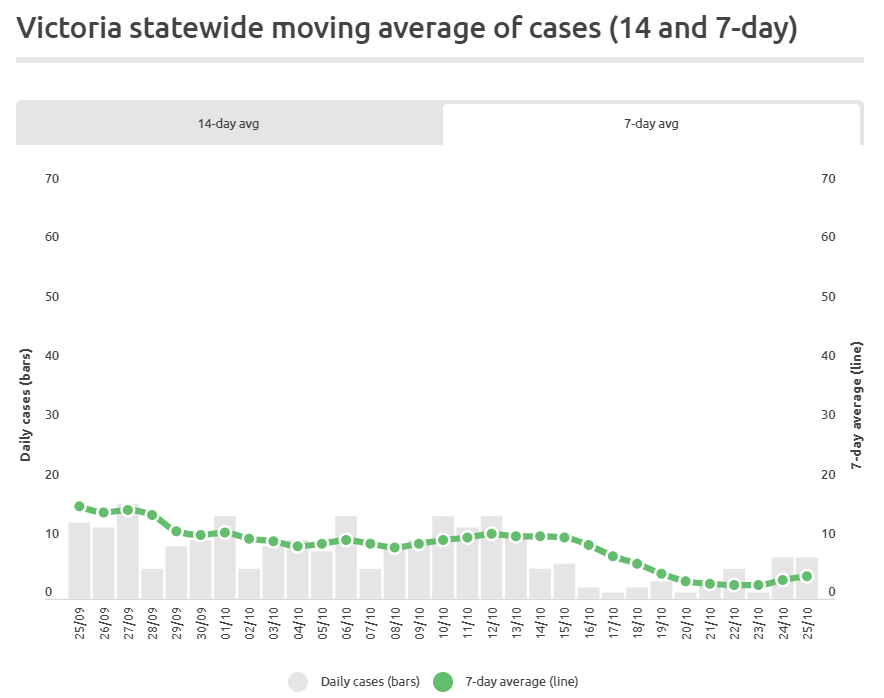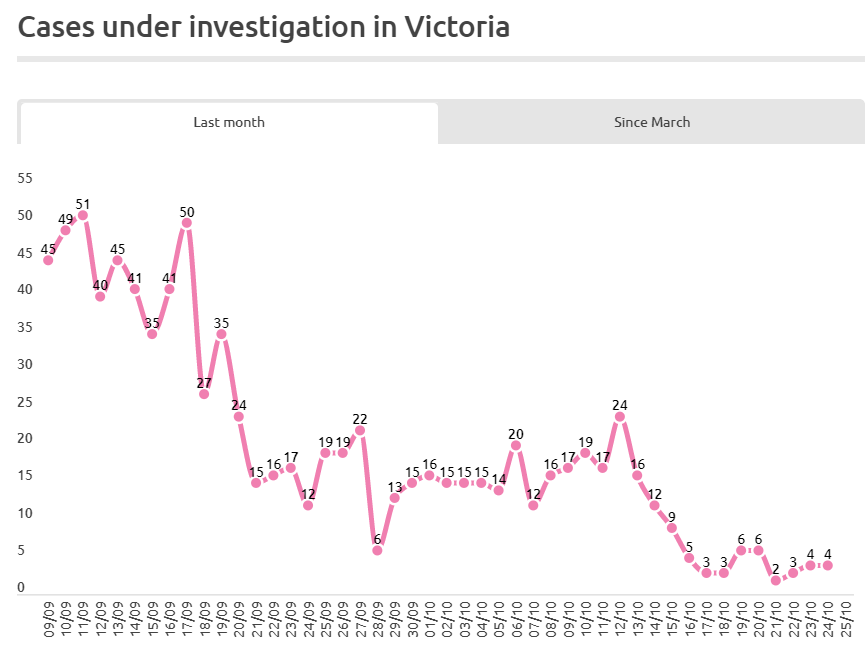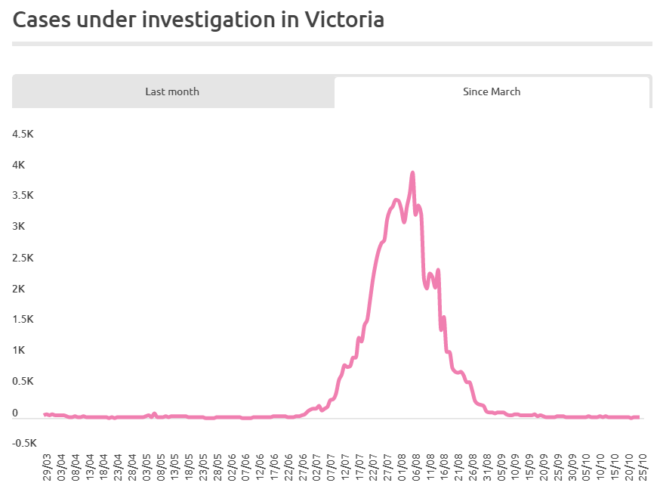Yesterday was another kick in the guts for Melburnians suffering through their 16th week of hard lockdown.
After telling Melburnians last week that “significant announcements” about reopening would be made on Sunday, Premier Daniel Andrews refused to remove draconian restrictions due to “lots of COVID-19 test results” relating to the Northern Melbourne cluster reportedly still being in labs awaiting results.
The refusal came despite Melbourne hitting the key threshold set in the original lockdown roadmap to ease restrictions by the later of 26 October 2020 and <5 new cases on average over 14 days:
The 7-day new case average is even better at only 3.9:
And mystery cases have cratered to levels not seen since early June:
Former Victorian health minister Jenny Mikakos slammed the lack of easing, claiming the Victorian Government is suffering from “paralysis in decision-making”:
Vic has met the under 5 threshold which some thought was unachievable. This was a very cautious target. 6/7 of new cases are related to a known outbreak so the risk is manageable. The set reopening is gradual & safe so any delay is unnecessary. It’s paralysis in decision-making.
— Jenny Mikakos #StayHomeSaveLives (@JennyMikakos) October 24, 2020
Melbourne Lord Mayor, Sally Capp, was equally scathing, accusing the Government of “Changing the goal posts”:
Changing the goal posts is confidence shattering for businesses that are struggling to hold on.
Every day is critical to keeping Melburnians in jobs and saving businesses.
— Sally Capp (@sallycapp) October 25, 2020
Melburnians are right to be angry. Daniel Andrews has effectively dangled a carrot in front of us, only to then hit us with a stick.
Outstanding tests aside, the fact remains that Victoria’s COVID-19 cases have plummeted to what should be easily manageable levels:
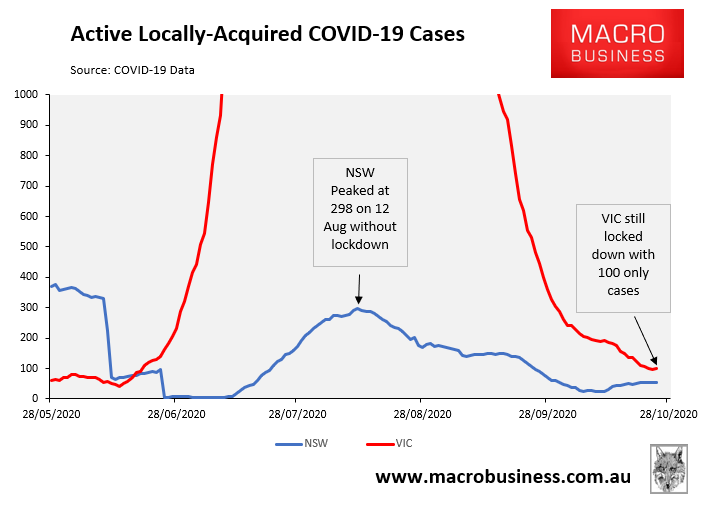
As shown above, Melbourne is still locked down with only 100 active COVID-19 cases across Victoria. This is well below NSW’s active cases in August, which peaked at 298 without Sydney locking down.
The question remains: if the NSW Government could manage far higher case numbers without locking down, why can’t the Victorian Government?
The answer is obvious: the Victorian Government does not have faith in its contact tracing system, which continues to make rookie mistakes:
The family at the centre of a COVID-19 cluster in Melbourne’s north are so devastated and shaken by the situation…
A mix-up led to the child attending the Islamic College on Monday and Tuesday, prompting doctors and community leaders to question whether health authorities were providing clear communication to coronavirus cases from multicultural communities.
The child’s two siblings had been positive cases, but a letter from the Department of Health and Human Services (DHHS) last week cleared them of having the disease and allowed them to leave isolation.
However, as a close contact, the year five student was meant to keep quarantining, which the family did not realise. He tested positive to the virus on Wednesday…
GP Catherine Orr, who has treated dozens of coronavirus patients from multicultural communities, said that the DHHS had never to her knowledge used translation or interpreting services when in contact with her patients — neither in verbal nor written communication…
Dr Orr said her patients were often extremely confused by the information the DHHS provided…
East Preston Islamic College principal Ekrem Ozyurek said… the family of the year five student believed all their children were cleared to attend school.
“The family did the right thing and brought the letter of clearance from DHHS [for the two positive children]. They’ve done nothing wrong. They did the best they can”…
On Friday, the DHHS said it would now directly inform schools about all students who should be isolating — both those who are infected, and contacts who should be quarantining…
On Thursday, Deputy Chief Health Officer Allen Cheng said the family had been dealing with multiple DHHS officers and that may have also led to the confusion.
Professor Cheng said, in future, single case managers would be assigned to families to avoid mixed messages…
How can Victoria’s contact tracing system still be so disorganised with people from the same family receiving contradictory and confusing advice from different DHHS officers?
Treating an infected household as a whole, rather than individually, is so obvious that it’s astonishing the DHHS hasn’t moved to this model already.
The Victorian Government has already experienced a series of virus outbreaks from large family groups and has had seven months to get the state’s contact tracing system up to par. How many more contact tracing failures will it take before it gets the system right?
Improving contact tracing must be priority number one. The Victorian Government cannot repeat the same mistakes. Otherwise, Melbourne risks more lockdowns.

